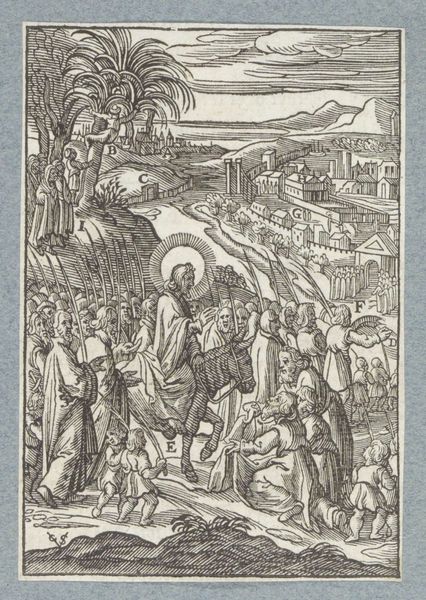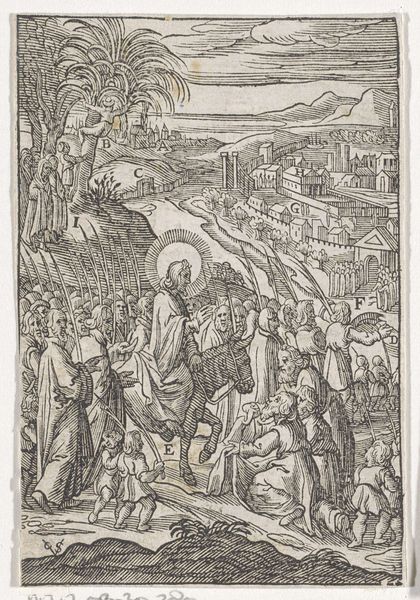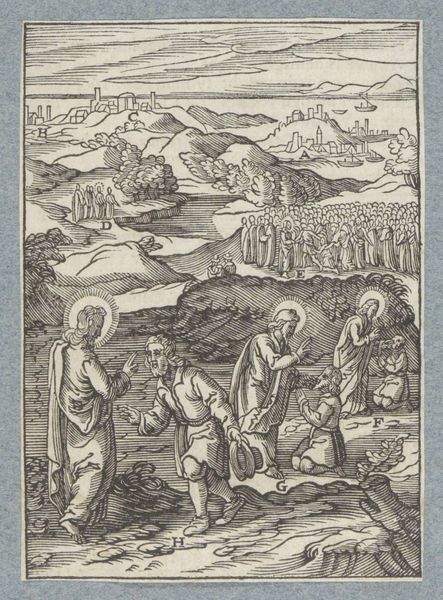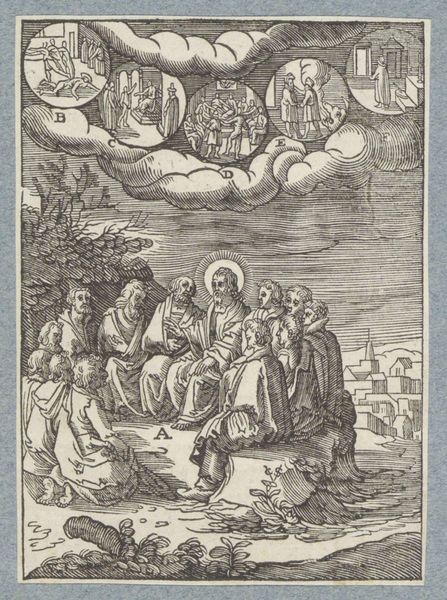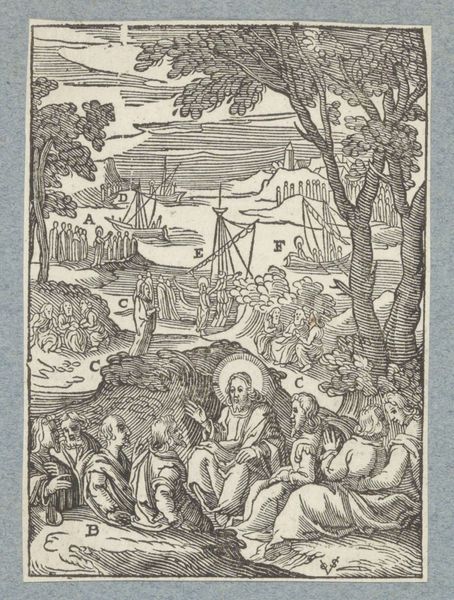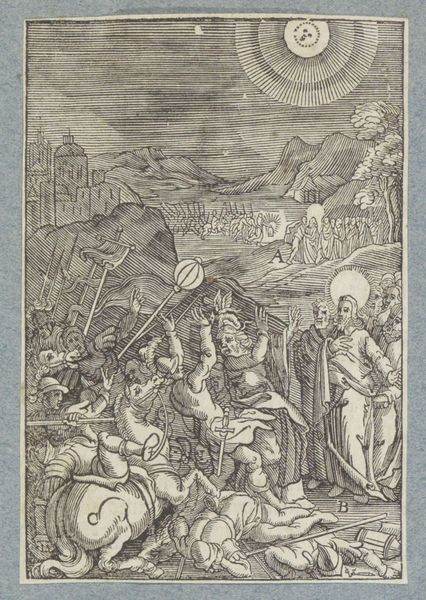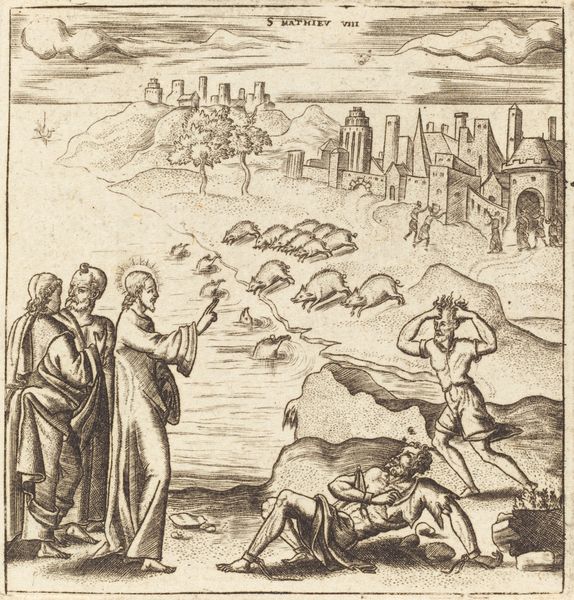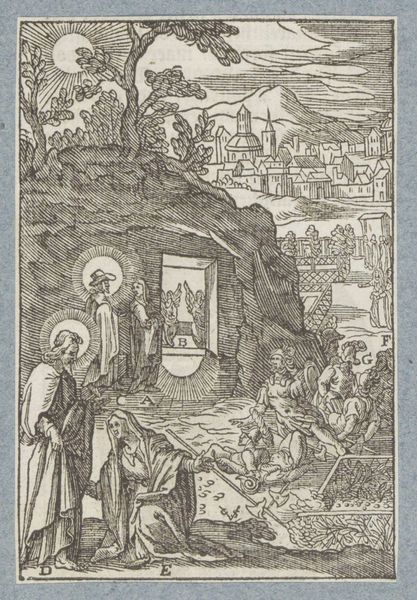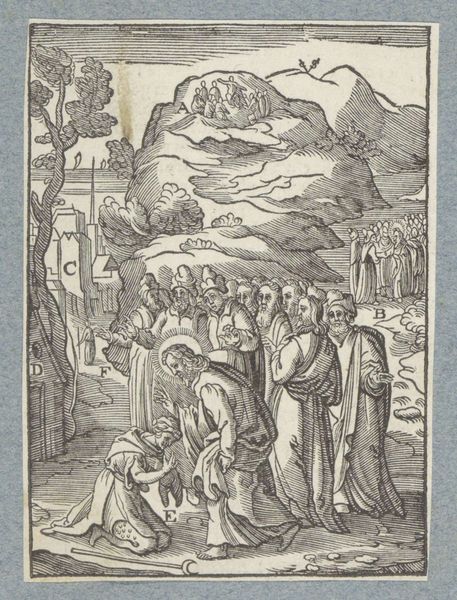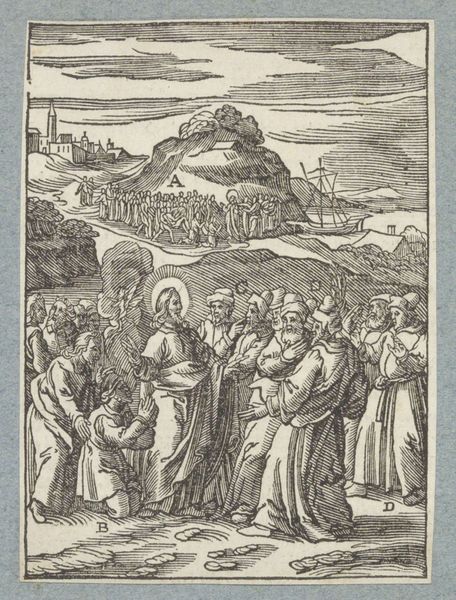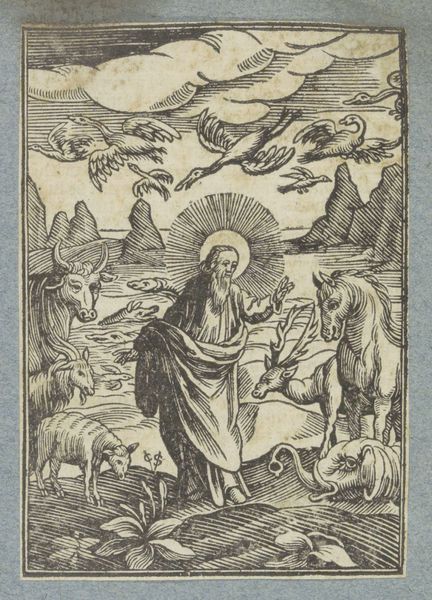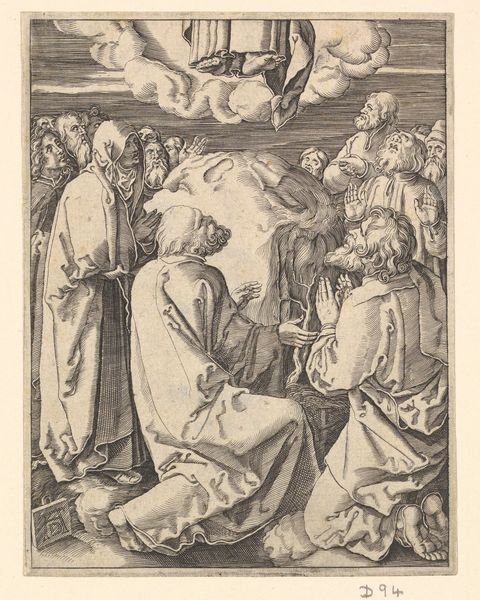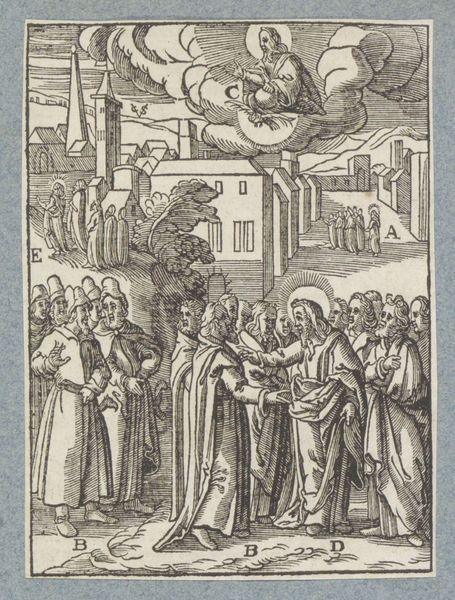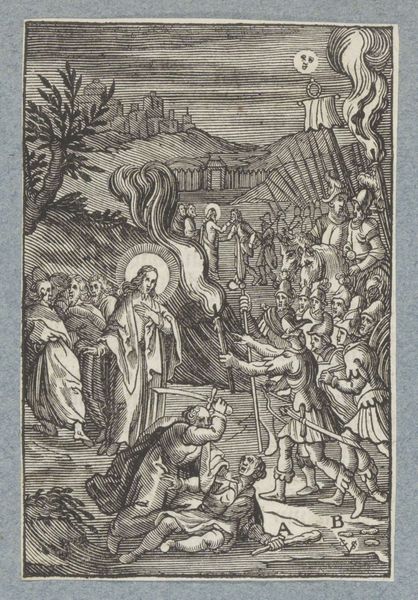
Archangel Michael, slaying the Shakers, saints Sisinius and Maruf, with the martyrdom of Sisinius 1831
0:00
0:00
painting, oil-paint
#
byzantine-art
#
narrative-art
#
painting
#
oil-paint
#
figuration
#
handmade artwork painting
#
oil painting
#
naive art
#
history-painting
Dimensions: 31.6 x 26.2 cm
Copyright: Orthodox Icons,Fair Use
Curator: I’m immediately struck by the layered composition—distinct registers create this spatial disjunction, common in icons. And that muted palette reinforces a solemn tone, don't you think? Editor: Indeed. What we have here is an oil painting from 1831. It depicts "Archangel Michael, slaying the Shakers, saints Sisinius and Maruf, with the martyrdom of Sisinius." Notice the multiple narratives condensed into one devotional image. It's as if time collapses within the frame. Curator: Precisely! Look at Michael, triumphant yet stern. He brandishes these bundles of sticks – likely a symbolic scourge, linked to divine retribution and power. What emotional resonance does this vengeful figure hold, in contrast to, say, more peaceful depictions of angels? Editor: He embodies cosmic order— the celestial warrior defeating earthly corruption. The smaller scene below depicting Sisinius’ martyrdom reinforces this theme: unwavering faith unto death. Sisinius becomes a symbol of ultimate spiritual endurance. Curator: Yes, that narrative detail anchors Michael’s rage as divinely sanctioned action, not arbitrary cruelty. Saints Maruf and Sisinius frame Michael's victory with their presence to bring this into sharp contrast, yet even they hold this steely sense of determination. It is interesting the emotional balance across the three figures. Editor: I see it, and if we look to the crowd, there is this faceless quality. Perhaps they're not to be individuals in the traditional sense, but symbols representing a particular mindset. Consider the period of its creation; how did societal anxieties and religious beliefs inform its narrative structure and symbolic language? Curator: Intriguing—the 'Shakers' likely reference a dissenting sect whose practices were viewed as heretical, thus requiring heavenly intervention. And yes, you’ve reminded me: by delving deeper into the symbolism and its relation to contemporary culture, one gets closer to the essence of faith in both visual and spiritual planes. Editor: Quite so. Focusing on its formal arrangements also lets us appreciate this image as both artifact and constructed argument. It urges us to contemplate the powerful fusion of material presence, theological meaning, and perhaps most significantly, that ever elusive quality that is belief.
Comments
No comments
Be the first to comment and join the conversation on the ultimate creative platform.
